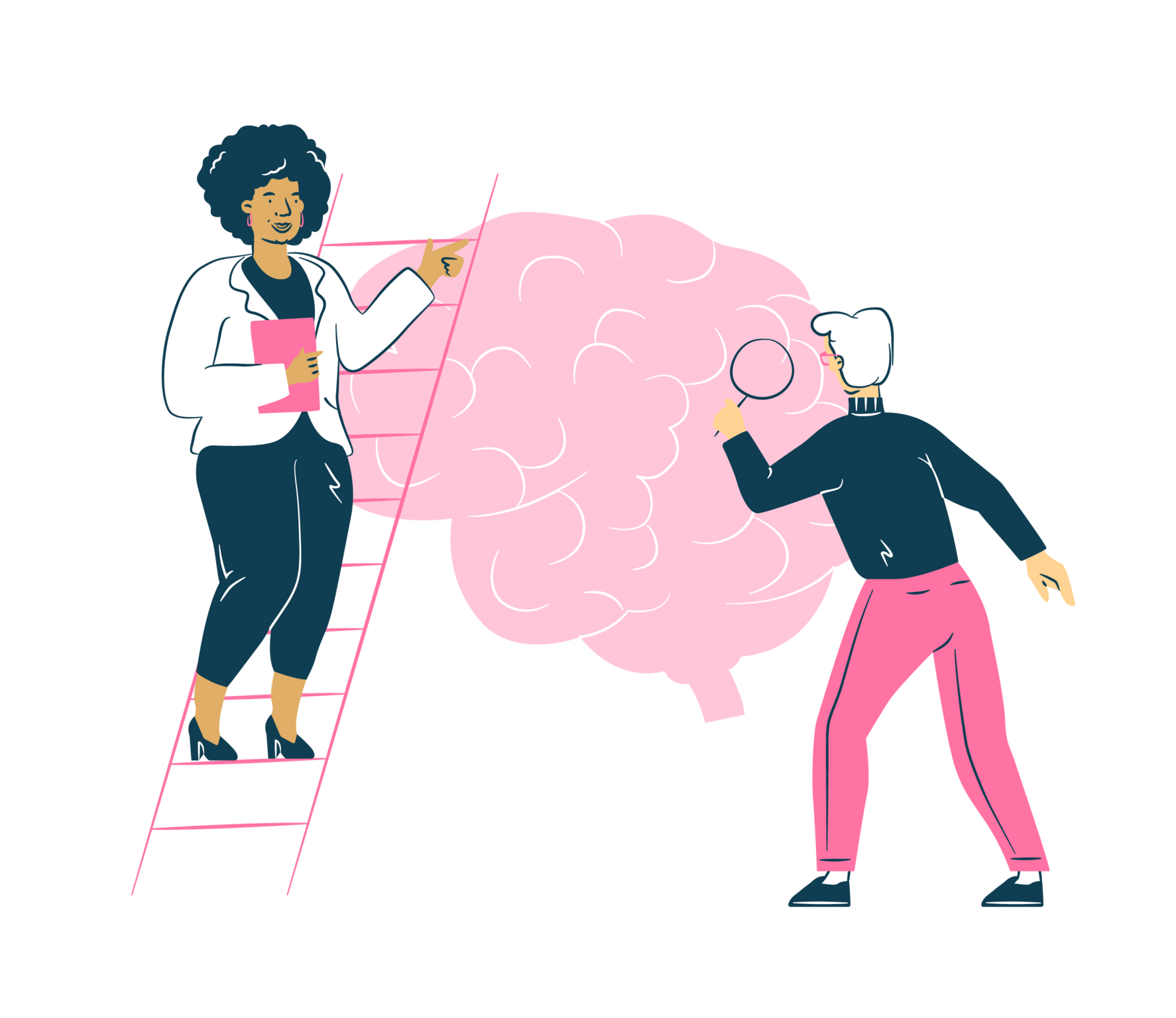In working life, continuous learning is a necessity. But how does an environment designed for the needs of a neurotypical learner fit a person diagnosed with ADHD? Milla from Gofore gathered together the thoughts of the members of Gofore’s ADHD peer support network about what concrete actions are needed from the employer for studying.
Adaptation is tiring
ADHD diagnosis includes symptoms such as inattentiveness and hyperactivity, by which individuals with ADHD can have negative experiences during their earlier studies. As a person with an ADHD diagnosis, I would describe myself as a daydreamer when it comes to studying: my thoughts wander easily and I often feel restless inside, even if it’s not always visible to others. Adults with ADHD experience symptoms in various ways and even if they seem to be doing well as students on the surface, they still have to put in additional effort.
Traditional teaching methods, such as lecture-style teaching, are designed meet the needs of neurotypical students, which may not necessarily support the success of ADHD students in the best possible way. If negative experiences have accumulated since adolescence, the idea of starting studies can feel overwhelming. ADHD students may experience shame, as they have to exert significant efforts to adapt to the neurotypical model. It is disheartening, that according to a research ADHD students have lower academic performance and an increased risk of dropping out of studies. ADHD students may even over-achieve and strive for perfection, which can result in, for example, getting stuck on a task and being unable to progress.
In face-to-face group teaching situations, environmental disturbances make concentration difficult. Therefore, minimizing external distractions, such as creating a calm and uninterrupted space, facilitates learning. Teaching methods matter for ADHD students: long monologues and passive listening make it challenging to follow the instruction. Taking notes simultaneously can help stay engaged but requires extra effort. The content and organization of study materials are also important. Unclear context or insufficient relevance can cause frustration, lead thoughts astray or even lose interest in studies. Additionally, long and complexly formulated sentences require time to grasp the meaning. Visualizing the material and providing clear organization have a positive impact on learning.
In online or self-study situations, maintaining interest and managing time require additional effort. The advantage of these learning formats is often the ability to choose the time of day. Optimizing the study time to align with ADHD student’s preferred alertness level can be beneficial for maintaining focus.
Challenges experienced during studying:
- Finding motivation and getting started
- Maintain interest
- Rapidly changing areas of interest
- Procrastination of a task or phase (e.g. seeking for perfection)
- Environmental distractions
- Unclearly formatted study material
- Difficulties with reading (without having diagnosed with dyslexia)
Practical relevance, clarity and visible results work as motivators
Despite the challenges, an individual with an ADHD diagnosis can be particularly motivated and successful. They may have enthusiasm in topics that deeply interest them, allowing them to delve deeply and persistently. When the learning environment is free from distractions and the learning style is favorable, ADHD students achieve the best results.
ADHD students have enthusiasm for learning new things, which enables rapid learning. When interest is sparked, even the smallest details are easily remembered and knowledge around the subject grows profound. Novel and interesting things serve as excellent motivation for a curious and eager ADHD students. At this point, I raise my hand: when I find an interesting topic, I dive into it passionately.
When teaching methods are interactive and involve practical application, such as through workshop-style learning, the interest is maintained. Practical tasks and examples help connect theory to real-life scenarios more easily and enhance memorization. Concrete outcomes keep ADHD students engaged. Additionally, if support, such as coaching or peer support, is provided, a certain sense of “accountability” can help with the continuity of studies. When the studies are broken down into clear units and possibly smaller parts, their completion feels more straightforward. When one smaller unit is completed, a sense of achievement is created, which enhances motivation.
Motivating factors in the beginning of the studies and during them:
- Learning new things
- Engaging teaching style
- Support and peer support
- Concrete results
- Practical tasks and examples
- Learning by doing
- A clear plan of progress and deadlines
Three ways in which the employer can support
- Since individuals with an ADHD diagnosis are often eager to learn new things, it is important for the employer to provide diverse opportunities for professional development. In studies, an ADHD student needs clarity, planning, manageable units and clear deadlines. The employer can offer assistance in creating a learning plan, for example, with the help of a coach. Together with the coach, they can clarify what areas the ADHD student would like to develop and what would be a suitable and realistic schedule. The annual plan for professional development can be divided into smaller, more easily manageable units. Smaller milestones are more tangible to achieve.
- Additionally, it is important to discuss why studying is important if the ADHD student lacks internal motivation. The lack of motivation emphasizes the symptoms of inattention and hyperactivity. The employer should be flexible in situations where the development of certain skills is required. For example, if it is a specific course or certification, it is good to consider if there are other ways to demonstrate the employee’s competence without setting strict limits. It may be more effective to learn the required skills in practice rather than through reading. Flexibility in learning leads to the best results.
- Monitoring employee well-being is important. An ADHD student is vulnerable to exhaustion as combining study and work requires executive functioning and attention. An enthusiastic ADHD student can be a multitasker, managing multiple tasks simultaneously. If signs of exhaustion are noticed or if there are too many irons in the fire, it may be a good time to pause and have a discussion. The ADHD student can be approached with empathy and a conversation can be held about finding a suitable balance, effective scheduling and establishing boundaries for well-being.
Support desired from the employer:
- Providing diverse learning opportunities
- Minimizing environmental distractions
- A possibility to create a professional development plan together with a coach
- Smaller units and milestones
- Discovering the inner motivation
- Maintenance of employee well-being and prevention of exhaustion
Blog post is written based on the conversations among the participants at #speedclub-Slack-channel. Speedclub is an ADHD peer support network for employees at Gofore.



